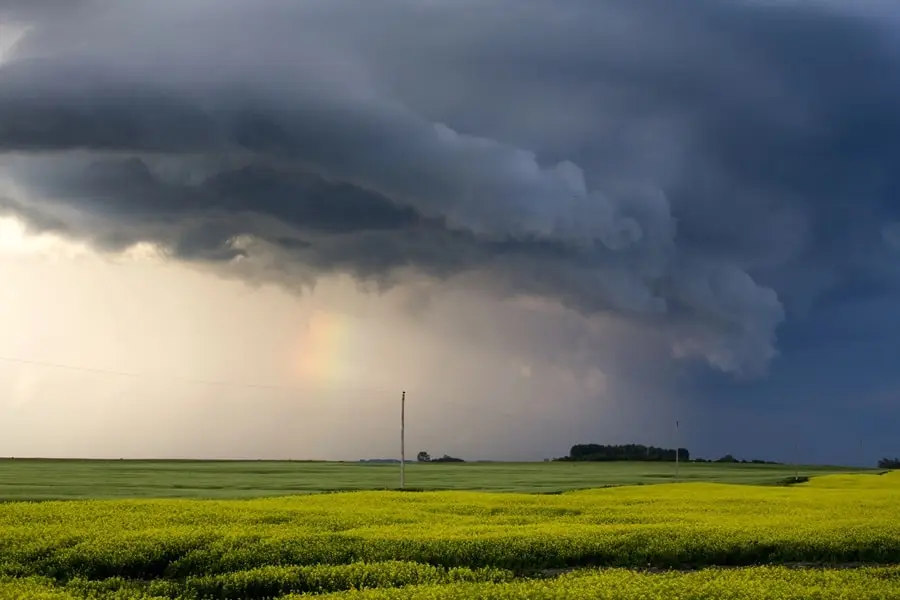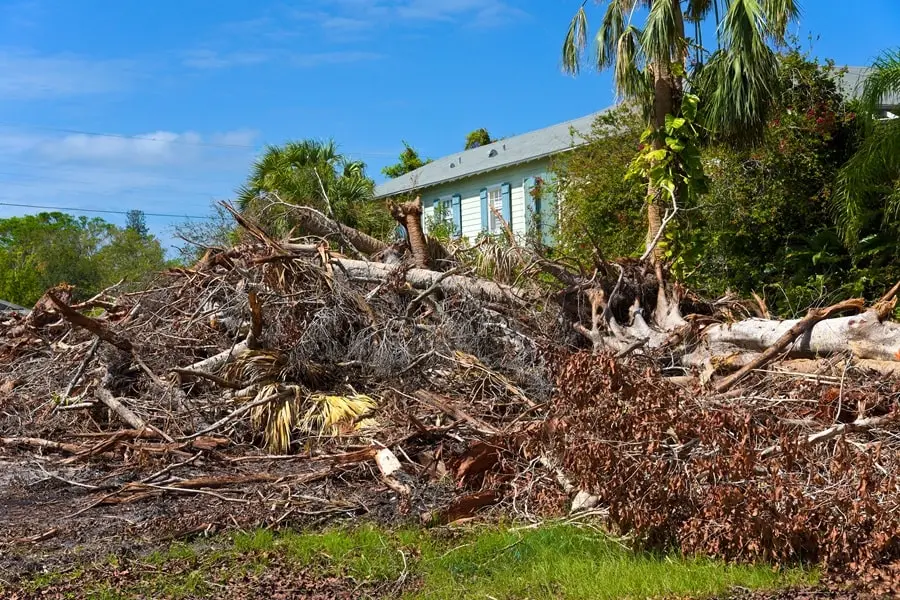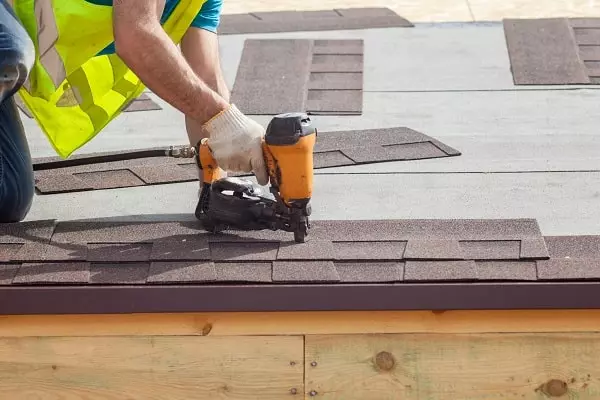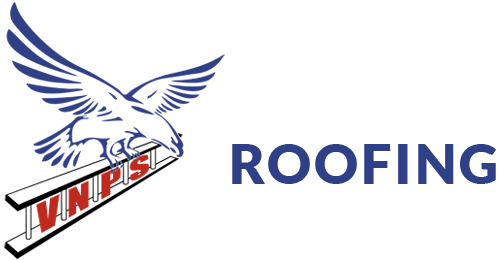Most Common Signs of Storm Damage on Tampa Roofs

Tampa homeowners are no strangers to severe weather such as thunderstorms and hurricanes, which can cause damage to roofs. While some storm damage—such as missing shingles or fallen debris—is easy to spot, other issues like hidden leaks, water infiltration, and structural weakening may go unnoticed until they result in costly repairs.
This guide will help you identify the most common signs of storm damage on Tampa roofs, both visible and hidden. By recognizing these warning signs early, you can take proactive steps to prevent further damage, protect your property, and ensure your roof remains durable against Florida’s harsh weather conditions.
Want to learn more? Read our full guide on Tampa Hurricane Roof Damage: How to Spot, Repair, and Prevent Costly Issues.
Exterior Signs of Storm Damage
After a severe storm, a quick visual inspection of your roof can help you catch early signs of damage. Here’s what to look for:
- Missing, lifted, or cracked shingles – Strong winds can loosen or tear off shingle roofs, exposing the underlayment and increasing the risk of leaks.
- Granule loss on shingles – Hail and heavy rain can strip protective granules from asphalt shingles, accelerating wear and tear.
- Dented or cracked metal roofing – Impact from hail or flying debris can weaken metal roofing, leading to long-term structural damage.
- Bent or detached flashing – Flashing around chimneys, vents, and skylights prevents leaks. If it’s bent or detached, water can easily seep through, causing mildew and algae buildup.
- Gutter and drainage issues – Storms can clog or detach gutters and downspouts, causing water to pool on your roof or around your home’s foundation, leading to costly water damage and potential flood risks. Additionally, moisture can also affect your homes' soffit, fascia, siding, and even window seals.
- Tree limbs or debris on the roof – Large branches and storm debris can puncture roofing materials, causing leaks that may not be immediately visible.
Concerned about missing shingles? Learn when it's time for a Roof Repair in Tampa.
Interior Signs of Roof Damage
Sometimes, storm damage isn’t obvious from the outside. Checking the inside of your home can reveal hidden problems before they worsen:
- Water stains on ceilings or walls – Peeling paint and yellow or brown stains on the wall often indicate a leak, which can lead to mold growth and structural issues if left unchecked.
- Damp insulation in the attic – Wet insulation loses its effectiveness, leading to higher energy bills. Poor attic ventilation can lead to increased condensation and mold growth, creating an ideal environment for moisture-related damage.
- Musty odors or mold growth – A lingering musty smell often signals trapped moisture, which can compromise indoor air quality and pose health risks.
- Visible light coming through the attic – If daylight is shining through your attic, it means there are gaps in your roof that could allow water, pests, and further wind damage.
Worried about roof leaks? Schedule a Roof Inspection in Tampa today.
What to Do If You Spot Storm Damage
If a storm has recently passed through Tampa Bay Area, it’s crucial to check your roof for damage as soon as possible. Taking the right steps early can help prevent costly repairs and ensure you get the home insurance coverage you deserve.
✔ Conduct a visual inspection – Walk around your property and check for missing shingles, dented roofing materials, damaged flashing, and debris buildup.
✔ Check your attic and ceilings – Look for water stains, damp insulation, or musty odors, which could signal hidden leaks.
✔ Take photos for insurance claims – Document any visible damage, including missing shingles, cracked tiles, or leaks inside your home. Clear photos will strengthen your insurance policy claim.
✔ Schedule a professional roof inspection – Not all storm damage is visible from the ground. A licensed roofer can assess your roof for hidden issues.
✔ Act quickly to file an insurance claim – Florida law requires homeowners to file hurricane-related claims within one year of the storm’s landfall, with supplemental claims due within 18 months.

Why Spotting Storm Damage Early Matters
Catching problems early saves money, protects your home, and simplifies insurance claims. If left unchecked, even minor damage can escalate into costly Tampa roof repairs. Here’s why acting fast is essential:
Small Issues Can Become Expensive Repairs
- A small roof leak today can turn into rotting wood and water-damaged rafters over time.
- Delayed repairs often lead to structural weakening and higher long-term costs.
Mold & Structural Damage Risks
- Hidden moisture from roof leaks creates the perfect conditions for mold, mildew, and wood rot.
- Prolonged exposure to moisture can compromise the integrity of your home’s foundation and walls.
Home Insurance May Deny Your Claim
- Many insurance companies require homeowners to act quickly after a storm.
- Delaying repairs or failing to document damage properly could result in a denied claim.
- Most insurance policies cover storm-related damage, but only if reported and repaired in time.
Don't ignore leaks! Read our full guide on Roof Leaks in Tampa: Causes & Signs.
Florida Wind Codes for Roofs
Florida experiences some of the most intense hurricanes in the U.S., which is why the Florida Building Code (FBC) enforces strict roofing standards to protect homes from severe storm damage.
Key Requirements:
✅ Wind Resistance: Roofs in high-risk hurricane zones must withstand winds of at least 130 mph.
✅ Structural Reinforcements: In Tampa and coastal areas, additional protections may be required, such as:
- Hurricane straps to prevent roof uplift.
- Secondary water barriers to reduce leaks.
- Impact-resistant shingles for better storm protection.
Insurance Benefits: Roofs that meet FBC standards may lower insurance costs and improve long-term storm durability.
Insurance Policy Tip: File Your Claim on Time
Many Florida homeowners don’t realize that delaying storm damage repairs can lead to a denied insurance claim. To maximize coverage, it’s crucial to act quickly.
Key Insurance Deadlines in Florida:
- Hurricane-related claims must be filed within one year of the storm’s landfall.
- Supplemental claims (for additional damage found later) must be filed within 18 months.
- Delayed repairs or lack of clear documentation may result in denied or reduced payouts.
💡 Pro Tip: After a storm:
✔ Take photos immediately to document all visible damage.
✔ Schedule a professional roof inspection for a thorough assessment.
✔ Contact your insurance provider ASAP to start the claims process.
Home Insurance & Roof Damage: What’s Covered?
Understanding what your home insurance covers can help you avoid unexpected costs after a storm.
What’s Covered?
- Wind damage (including high wind speeds and tornadoes).
- Hail damage (granule loss, dents on metal roofing, cracked shingles).
- Debris impact (such as tree branches falling on your roof).
- Water intrusion caused by storm-related roof damage.
What’s NOT Covered?
- Wear & tear or old roofing materials.
- Leaks from poor maintenance or lack of waterproofing.
- Pre-existing damage before the storm.

Why Choose Veterans National Property Services for Roof Inspections and Repairs?
When it comes to protecting your home after a storm, you need a trusted roofing company with experience in Florida’s extreme weather conditions. At Veterans National Property Services, we provide expert roof inspections, maintenance, and repairs.
- Locally owned and operated – As a Tampa-based roofing company, we understand the unique challenges Florida homeowners face and provide personalized service with deep knowledge of local building codes. Unlike out-of-town storm chasing companies, we are here before, during, and after the storm, delivering exceptional customer service and transparent communication.
- Licensed and insured roofing contractors – We meet and exceed Florida’s strict wind-resistance standards, ensuring every repair or replacement is built to last.
- Insurance claim assistance – Navigating an insurance policy claim after storm damage can be stressful. Our experts work directly with your insurance company to document damage and streamline the claims process.
- Durable roofing materials – We use industry-leading materials such as Owens Corning shingles, Duro-Last roofing systems, and impact-resistant options to provide superior protection against future storms.
Thinking About a Roof Upgrade? Roof Replacement in Tampa
Schedule a Roof Inspection & Get a Free Quote
If you've noticed missing shingles, leaks, or ceiling stains, don’t wait until the damage worsens. Even minor issues can lead to costly repairs if left unchecked. A professional roof inspection can uncover hidden damage and protect your home before the next storm season.
📞 Don't let minor damage turn into major repairs! Call Veterans National Property Services at (813) 609-5596 for a Free Roof Inspection & Get a Free Quote Today!
FAQ - Tampa Storm Damage
Can home insurance help cover roof repairs after a storm?
Yes! Home insurance policies often cover storm-related roof damage, including:
- Wind damage (missing or lifted asphalt shingles, wood shingles, or roof tiles).
- Hail damage (granule loss, dents in metal roofing, cracks in clay or tile roofs).
- Water damage caused by roof leaks from storm-related wear and tear.
📌 However, insurance companies may not cover:
❌ Pre-existing damage or lack of maintenance (e.g., clogged gutters, moss growth, or ignored leaks).
❌ Flood damage (this requires a separate flood insurance policy).
💡 Pro Tip: Always check your insurance policy and get multiple quotes for repairs before filing a claim.
How can I prevent water damage on my roof and inside my home?
To protect your roof and home from water damage, take these preventative steps:
✔ Clean gutters & downspouts – Clogged gutters lead to roof overflow, which can cause drywall damage, basement flooding, and foundation cracks.
✔ Check for leaks around chimneys & eaves – Cracked masonry or loose flashing can let rain and ice dams penetrate your home.
✔ Improve attic ventilation – Poor ventilation traps heat, leading to mold growth, ice dams in colder states like Maryland, and shingle damage.
✔ Inspect your deck & siding – Vinyl siding, eaves, and decks can suffer from water intrusion if not properly sealed.
How does extreme weather affect different roofing materials?
Each roofing material reacts differently to severe weather conditions:
- Asphalt shingles – Affordable but prone to hail and ultraviolet (UV) damage over time.
- Metal roofing – Durable against wind, rain, and freezing temperatures, but dent-prone in hailstorms.
- Tile roofing (clay/concrete) – Heat-resistant and long-lasting, but heavy storms can crack tiles.
- Flat roofs – Common on commercial buildings, but prone to water pooling if not properly sloped.
- Wood shingles – Aesthetic appeal but susceptible to pests, moss, and fire damage.
💡 Live in Tampa Bay? Owens Corning impact-resistant shingles are a great option for hurricane-prone areas.

